By Christopher Miskimon
The war in North Africa flung vast armies across the arid deserts of Libya and Egypt for two long years, beginning with the Italian invasion of Egypt in September 1940. A lightning British counterattack threw the Italians back halfway through Libya before the arrival of General Erwin Rommel and the German Afrika Korps. Together the Germans and Italians likewise forced the British back into Egypt in April 1941, with only a small force left in Libya holding the fortified town of Tobruk.
Since then massive battles covering enormous swaths of desert had brought each side alternately back and forth as fortunes, supplies, and fuel waxed and waned. Now, in October 1942, British General Bernard Montgomery put into action his plan to roll the Axis army backward into Libya permanently. This confrontation would become known as the Second Battle of El Alamein.
Taking Position at Outpost Snipe
For months Montgomery and his hardworking staff had been building up their army, hoarding supplies, bringing up new tanks and artillery pieces, and training their soldiers to penetrate the vast Axis minefields and defenses. Once all was in readiness, the engagement began on the night of October 23 with a massive barrage laid down by almost 600 cannon. A small but significant part of this battle would occur a few days later when a battalion of British infantry and antitank guns would wreak havoc on Rommel’s panzer force at a tiny defensive position named Outpost Snipe.
That battalion, the 2nd Battalion the Rifle Brigade (shortened to 2nd Rifle Brigade in British parlance), was part of Brigadier T.J.B. Bosville’s 7th Motor Brigade, the infantry element of the British 1st Armored Division. As such, the unit was very different from a standard British infantry battalion. It was heavily motorized, including scout platoons with 33 of the tracked vehicles known as Bren carriers. Along with these were machine gun platoons equipped with water-cooled Vickers guns and a platoon with 3-inch (81mm) mortars for additional firepower. Significantly for the job ahead, the battalion had an antitank company (S Company) equipped with 16 of the new 6-pounder guns, a vast improvement over the obsolete 2-pounder weapon. The heavy firepower of the battalion was balanced by the fact that there were only 90 actual riflemen in the entire unit.
The 2nd Battalion spent the first few days of the battle supporting engineer units engaged in clearing the large and numerous minefields the enemy had laid to slow any attack. Some casualties had been sustained during this time, so only 76 riflemen and 22 carriers were available for duty. Fortunately, 2nd Rifle Brigade had been reinforced with 16 sappers of the 7th Field Squadron, Royal Engineers, and 239 Battery of the 76th Anti-Tank Regiment, adding another 11 of the 6-pounders to their armament. At 4 pm on October 26, the battalion commander, Lt. Col. Victor Buller Turner, was assigned a new mission.
The 1st Armoured Division was going to attack in the area of Kidney Ridge, so described because of the terrain feature’s shape on a map. Near this spot were two areas code-named Woodcock and Snipe. Another battalion of the 7th Motor Brigade, the 2nd Battalion, King’s Royal Rifle Corps (2nd KRRC), would occupy the Woodcock position while 2nd Rifle Brigade would take up position at Snipe; both would act as anchor points for the attacking forces. There, they would facilitate the advance of the tanks.
“Last Man, Last Round”
When Lt. Col. Turner arrived at Brigadier Bosville’s headquarters, he had his part of the plan personally explained to him by the 1st Armoured Division’s commander, Maj. Gen. Raymond Briggs. The general simply told Turner to lead his battalion west from Kidney Ridge to Snipe that night at 11 pm and dig in. At first light, around 5 am, the division’s 24th Armored Brigade would use Snipe as a pivot point during its attack. An artillery barrage would start five minutes before H-hour on a bearing of 233 degrees so the battalion could follow under its cover to the objective. If the barrage came in on a different bearing, Turner was to follow it anyway.
After receiving his orders, Turner informed his second in command, Major Tom Pearson, of the situation and left him to prepare the battalion for its mission that night while he went forward to perform a reconnaissance of the ground they would have to cover in a few short hours. Peering through his binoculars, Turner could see little but open desert dotted here and there by camelthorn bushes. His troops would be badly exposed as they moved. It would also be exceedingly difficult to determine one’s exact position in an area so devoid of terrain features. In fact, the actual positions of both the 1st Armoured and the neighboring 51st Highland Divisions were off by around 1,000 yards. This would only add to the confusion the British soldiers were soon to experience at all levels.
Returning to his battalion, Turner explained the situation to his gathered officers. He was uneasy but determined to carry out his mission. As his junior officers stood around him, Turner told them he thought this would be a “last man, last round” affair. Indeed, Lieutenant Alan Baer, commanding the attached 239 Battery, had been told earlier by one of his own superiors, “I should think it highly probable that you are in for a death or glory affair.”
As H-hour approached, the battalion prepared to move out. Major Pearson had done his job preparing the column; the scouts’ carriers were ready to spring forward, the riflemen right behind. Next in line were the antitank guns loaded on Chevrolet trucks referred to as portees. These, along with the trucks carrying supplies and spare ammunition, would wait on Kidney Ridge until called forward to dig in at Snipe. All was ready when the barrage began to fall at 10:55 pm. In the first of many such mishaps 2nd Rifle Brigade would experience, the artillery was falling on a bearing of 270 degrees, not 233 as planned. Turner realigned his men to follow on the new direction, and they moved out at 11:10.
Scattered enemy fire greeted them but did not affect the advance. The only delay occurred when the column bumped into a line of barbed wire. The engineers went forward and determined it only enclosed a dummy minefield. The cold night air swirled with the dust from the vehicles and exploding shells, shrouding the British in a thick haze. Turner donned a leather jacket to fight the chill and kept a close eye on his jeep’s odometer, using it to keep track of his troops’ progress. Behind him his adjutant, Captain Tim Martin, rode in a 15-cwt truck, watching his own odometer and sending frequent radio updates to headquarters about their position. To confuse any eavesdropping Germans, he used an improvised code, making reports such as, “We have just done the Cambridgeshire distance.”
After advancing about 3,000 yards, Turner asked his artillery forward observation officer (FOO), Captain Ralph Noyes, to call for a smoke shell to be dropped directly on Objective Snipe. The round landed only 300 yards away, leading Turner to believe he was close to his assigned goal, so he moved his men into an oval-shaped depression about 800 by 400 yards at 12:15 am on October 27. Actually, Turner’s battalion was some 800 to 900 yards south of where it was supposed to be. As events would prove, however, digging in at the depression would be a stroke of good luck. An Axis supply depot had occupied the low area in the recent past; a few enemy bodies dotted the landscape, and a small German dugout was still usable. It became Turner’s new battalion headquarters.
With his infantry digging fighting positions in the powdery sand, Turner called forward his antitank guns. Major Pearson had been awaiting the signal to advance; his column had been the target of enemy artillery for the past hour, and at 11:30 an enemy plane had appeared overhead and bombed them. A number of vehicles suffered damage and several casualties were taken. As the column moved out, the battalion medical officer, Captain Arthur Picton, stayed behind with the ambulances to treat the wounded.
Gruppe Stiffelmayer
The trip to Snipe turned out to be rough going. The swirling dust obscured the route, and many vehicles quickly became mired in the soft sand. Each time one became stuck, soldiers would go to work with shovels and tow ropes, placing mats under the tires to gain purchase. Some could not be freed, so the column had to go on without them. By 3:45 am, only 13 of the battalion’s 6-pounders along with six more from 239 Battery had arrived at Outpost Snipe. The supply lorries offloaded all the spare ammunition, food, and water they carried while the guns were distributed around the perimeter. The 239 Battery was situated along the northeast section, while S Company spread its cannon along the rest of the position. The 2nd Rifle Brigade was now ready to face the dawn and whatever it brought.
Turner was not content to rest, however. While his soldiers were fortifying Snipe he sent C Company’s scout platoon, led by Lieutenant Dick Flower, to reconnoiter to the west. There were campfires on two sides of the depression, some distant to the southwest, others only 1,000 yards to the north. This led Turner to realize his position lay within enemy lines, an ominous portent of things to come.
As the battalion commander took stock of his situation, Lieutenant Flower’s platoon ran into the enemy. Their first encounter was with a small position with 14 Italian infantry who quickly surrendered. Almost immediately another group of 150 were discovered; they seemed willing to surrender as well. Unfortunately, Flower’s platoon was too small to handle such a large number of prisoners. Some riflemen would have to be brought forward.
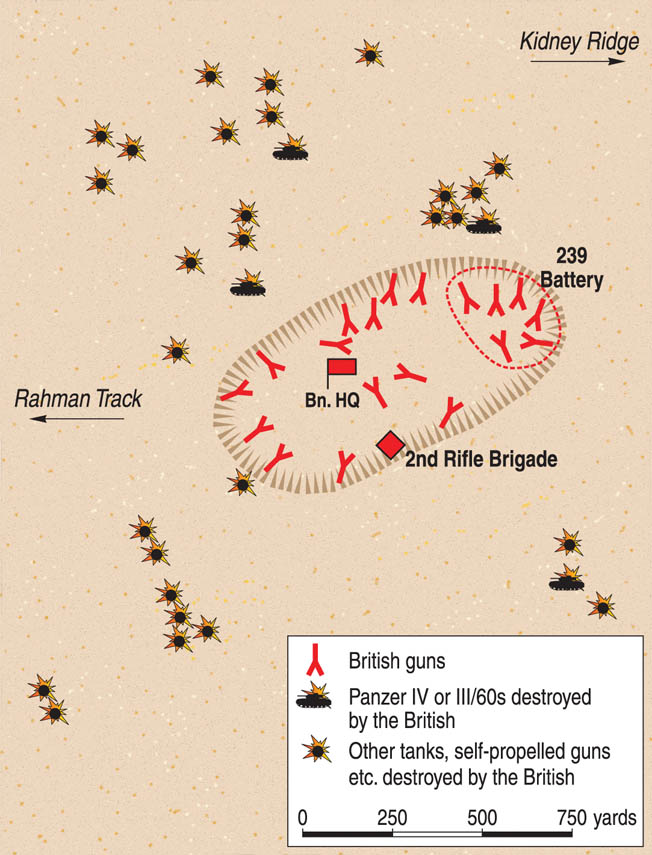
Before they could arrive, the British scouts made a more alarming discovery. They came upon the laager of a large German/Italian battle group with some 35 tanks and self-propelled guns parked in the darkness. Known as Gruppe Stiffelmayer, their guard was seemingly down as the British scouts were able to close and attack the laager with the Bren guns on their carriers. Tracers and muzzle flashes lit the night, and confusion reigned for a few moments. Three German supply trucks were quickly set afire by the shooting, but this forced the British to retreat as the light from the flames exposed them to the angry response of the panzer crews. One carrier was lost, and most of the prisoners ran off, many being cut down by fire from both sides. Flower took his platoon back to Outpost Snipe without further loss.
Lieutenant Colonel Turner now knew there was an armored unit to his west; in addition, tanks could be seen in the moonlight around the laager to the north. The formation to the north was actually part of the 15th Panzer Division. Around 3:45 am, the sounds of engines starting to the west signaled that Gruppe Stiffelmayer was beginning to move. It is probable that they decided to move because, having been found by the British, they feared an impending bombardment or attack. Whatever the case, the German force split into two groups. One headed northeast toward the 15th Panzer’s laager while the other formed a single column and moved directly toward Outpost Snipe.
Leading the column was one of the precious Panzer Mark IV F2 tanks, known to the British as the Mark IV Special. This was an upgraded Panzer IV with a long-barreled 75mm high-velocity cannon, making it the most powerfully armed tank in North Africa. There were only 30 of them in the entire Afrika Korps, and now one of them was bearing down on Outpost Snipe at the head of a host of German armor. Fortunately for the British, the column came on unaware that a large enemy force lay dug in straight ahead. The Germans were in for a surprise.
16 Tanks Knocked Out
Crouched behind the gun shields of their 6-pounders, the British crews let the Axis column close to point-blank range. Then, with the Mark IV Special a mere 30 yards away, one of the antitank guns opened fire. The 6-pound armor-piercing round tore through the armor of the panzer, and the tank burst into flames. At the same moment, another gun crew opened fire on a self-propelled gun, identified as a Panzerjäger 38t, an obsolete Czech tank chassis converted to carry a captured Soviet 76.2mm gun. Thinly armored, this vehicle too was knocked out. Confused as to the origin of this deadly accurate fire, the German tankers retreated, still unaware there was a British battalion in their midst. The British gunners rejoiced; finally they had a weapon that could knock out the feared panzers. They were subdued a little by one of the survivors of the Mark IV. He had managed to get out of the tank and take cover, from which he began sniping at the British. The lone soldier would continue this for several hours until, a little after sunrise, an English grenade silenced him forever.
Minutes later, at 4 am, the artillery FOO, Captain Noyes, decided to do some scouting of his own. Outpost Snipe was sure to come under attack at some point, and a reconnaissance of the surrounding area would help him plan the use of the supporting artillery. He set out from Snipe but did not return. Explanations for his disappearance conflict. One account says he was captured by a German patrol, while another states he accidentally strayed into another British position and could not get back once the fighting started. Whatever the case, his skills at directing artillery would be sorely missed in the hours to come.
For the immediate time, however, there was little call for artillery as the area became quiet for the next two hours. The Germans were still not aware of the British occupation of the Snipe depression even though they had been fired on from it. In the confusion of battle they had apparently been unable to determine where the incoming fire had come from, so for now the outpost remained safe and hidden. At 5:45 am, Major Pearson left, taking the transport vehicles with him as they were too vulnerable and exposed even in the depression. The column soon made its way to safety back on Kidney Ridge.
It was well they did, for at 6:15 the two Axis armored columns began to move, surprisingly enough, to the west. Some of the German tanks appeared out of dead space, suddenly visible to the British gunners from their hidden positions. Best of all, both groups were facing away from Snipe, their thinner side and rear armor an easy target for the powerful new 6-pounders. The British could have stayed silent and waited, but the Axis columns were simply too tempting a target.
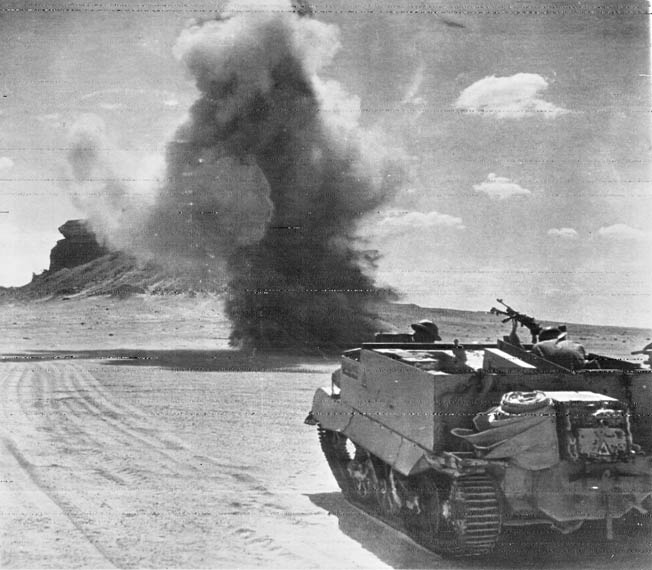
The order to fire was given, and the brightening dawn sky was lit even further by the muzzle flashes of British guns and the flames of burning German and Italian tanks. Some of the tanks were as far as 800 yards from Snipe’s guns, but it did not help them. One after another Axis fighting vehicle fell victim to the murderous fire. Sergeant Charles Callistan, a gunner of 2nd Rifle Brigade, relayed his experiences: “I let go at 150 yards. You couldn’t miss. All our guns seemed to be firing at once. My target burst into flames but came on for another 50 yards before it halted. Suddenly the night was bright with burning tanks.”
On the other side of the battle an Italian officer, Capitano Preve, gave details of his own men’s fight against the British: “Suddenly there is the most violent fire from another eight or ten antitank guns hidden on our left and in depth.” As Preve watched, one of his junior officers led a brave but futile attack. “Second Lieutenant Camplani from outside his turret urges his own tanks to the attack at the head of them, drives his own tank at full speed on the most forward antitank gun.”
Despite such bravery, the galling British fire was more than either Axis force could endure and both retreated, leaving a total of 16 knocked-out vehicles strewn across the desert. As the surviving crews abandoned their tanks to flee, the Vickers guns of the infantry went into action, cutting down many of the tankers as they ran desperately for safety.
Smoke Over the Sand
So far things had all gone 2nd Rifle Brigade’s way. Eighteen armored vehicles had fallen to its guns along with several supply trucks and many killed and captured Axis infantry from earlier. Now that would change because the Germans and Italians knew exactly where they were. Both artillery and direct fire began to fall in the area. At the same time, with the sun now up it was obvious some of the 6-pounders, laid in the darkness, were too exposed and had to be repositioned. Carriers were used to move them, and each time this drew fire. The situation was becoming hot, prompting Captain Marten to ask Lt. Col. Turner if they were in fact in the right place. Turner replied, “God knows, but here we are and here we’ll stay.”
Despite the confidence he radiated, Turner was actually quite worried. His battalion was there to act as a pivot point for the advance of 24 Armoured Brigade, but it was now late and nowhere to be seen. He could not know that the attempt to seize the Woodcock position had failed and this had upset the rest of the offensive. Nevertheless, there was nothing to do but hold on.
Shortly afterward, dust clouds were spotted off to the east, a telltale sign of tanks on the move. Within minutes Sherman tanks of the 47th Royal Tank Regiment (47 RTR) appeared on the crest of the ridge, from which they could see Outpost Snipe. Tragically, seeing the 2nd Rifle Brigade’s tight perimeter surrounded by Axis armor (at a distance, they could not tell that those tanks were knocked-out hulks), the British tankers mistook the position for a German strongpoint and opened fire on it. British shells screamed in on the outpost, much to the consternation of the British soldiers occupying it. Much of it was landing on 239 Battery, situated as it was on the east side of Snipe. The battalion’s intelligence officer, Lieutenant Jack Wintour, wasted no time in getting to his Bren carrier and rushed off to the ridge to personally stop the firing, but it took until 8 am before all the tankers were made aware of the error.
By then the men in Snipe spotted another concentration of 25 German tanks 1,000 yards to the west. As the tanks began to assume hull-down firing positions, the British gunners opened fire, hitting three that burst into flame. At 8:30, the tanks of 47 RTR arrived, taking cover in the depression with the gunners and infantry. This mass of British combat power drew Axis fire like moths to a flame. Artillery, tanks, and antitank guns deluged Outpost Snipe, throwing great clouds of dust and smoke into the air with each explosion.
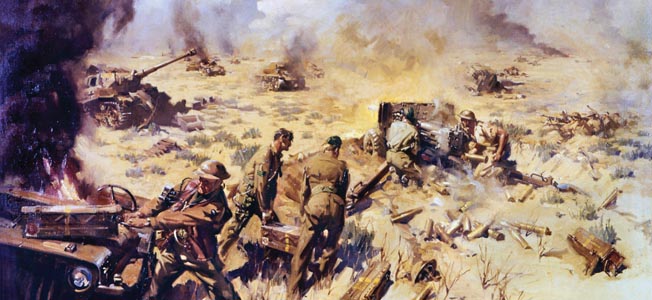
Both sides laid smoke screens to protect themselves from enemy fire, only adding to the thick haze that prevented the British gunners from picking out targets. The Axis tankers and gunners even used a new tactic against the newly arrived Shermans. When a panzer gunner spotted an enemy tank, he would fire a smoke shell at it, marking it for his comrades. They in turn would hit the area around the target with 88mm and heavy gunfire; within 15 minutes seven Shermans were burning.
In his foxhole nearby, a British rifleman named Crimp huddled as low as he could next to his mates and tried to endure the shelling. “The shells scream down in inexorable succession, and all around us is the driving rending crash of high explosive. Several times my tin hat is crushed onto my head by the impact of near detonations, and once my lungs are filled by a rush of sand. Everyone lies still. You can’t do a thing—it just has to happen. If one lands in the trench—well, we shan’t know much about it.”
It proved more than the tankers could take, and at 9 am 47 RTR withdrew back to the ridge, reduced to a mere five Sherman and six Crusader tanks. To their left, 41 RTR, both part of 24 Armoured Brigade, had lost 12 tanks itself and also pulled back, ending the attack for which 2nd Rifle Brigade was to be the pivot point. This left the men at Snipe isolated and alone, though most of the infantry were glad to see them go—the tanks drew too much fire.
Low on Ammo
The gunners likewise suffered during the bombardment. In 239 Battery, Sergeant Bob Smith’s 6-pounder took a direct hit and was knocked out and the entire crew killed or wounded. Smith himself was temporarily blinded but still managed to get to Sergeant Ronald Wood, one of his friends, to help his gun crew. Another gun was also put out of action. Meanwhile, Sergeant R.W. Binks spotted a Panzer IV at a range of more than a mile, a long shot even for the 6-pounder. Taking careful aim, he fired and hit the tank on his third shot, destroying it. Another panzer appeared to tow away the hulk, but Binks’s luck did not hold and it got away.
Turner, lacking an artillery observer, could not direct any fire at his antagonists, and at 9:05 he sent a message to his brigade headquarters saying, “Our crying need is for a gunner.” The 7th Motor Brigade promised to send one, but the gap between Snipe and friendly lines was now more than a mile, with all of it under Axis observation. The observer never got through. Turner’s need for such a man became even more urgent when it was realized that much of the incoming artillery was British. It was a maddening situation, but eventually Major Pearson, who had returned with the light vehicles, personally went to the British artillerymen and persuaded them to cease fire.
Even while the “friendly”artillery was falling around Snipe, Italian infantry were spotted to the south preparing for an attack. Turner decided to use his scouts to conduct a spoiling attack and sent Lieutenant Flower’s platoon to deal with them. The British soldiers climbed aboard their carriers and sped off. Within minutes they closed with the Italians and put them to flight, even destroying a pair of Italian trucks, each towing a captured 6-pounder. The scattered infantry tried to make their way back to Axis lines while the scouts returned to Snipe.
“During the next half hour many excellent sniping targets were offered by small groups of Italians as they tried to run away,” Flower recalled. Since machine-gun ammunition was now running short, the soldiers were ordered to use only their Lee-Enfield rifles.
Acutely aware of the dwindling ammunition supply, Captain Peter Sheperd-Cross volunteered to take three carriers back to friendly lines to get more. Each of the carriers was loaded with the worst of the wounded. Sheperd-Cross and his men took off across the desert floor for the ridge, enemy fire snapping and bursting all around them. The captain’s carrier even took a direct hit from a 75mm gun, but all three made it back to the main British line. Sending off the injured and gathering all the ammo they could carry, the group tried numerous times to get back to Snipe. Each attempt was met with such intense fire they had to run back. Major Pearson had likewise put together a relief convoy, but it met the same difficulty.
Panzers in a Crossfire
Outpost Snipe met its next threat from the southwest. Thirteen Italian tanks from the 133rd Armored Regiment of the Littorio Division, led by Capitano Preve, charged, firing as they came. The attack was designed to keep Outpost Snipe busy while Gruppe Stiffelmayer counterattacked the now-repulsed 24 Armoured Brigade. Turner became concerned since that part of his perimeter was not as strongly held as the rest. He ordered two guns moved to bolster that section. The soft, powdery sand was a great hindrance to the crews as they struggled to get the 6-pounders re-sited. Enemy fire killed four men as they toiled. Despite their casualties, the gunners laid into the Italian force and quickly destroyed four tanks, causing the rest to retreat and eliminating the threat for the moment.
With the diversion neutralized, Gruppe Stiffelmayer was forced to divert some of its strength (25 to 30 tanks) to attack Snipe. At 10 am, the German force advanced in two groups, one heading toward 24 Armoured Brigade and the other aimed straight at 2nd Rifle Brigade. The move inadvertently doomed the German attack, catching it in a crossfire. The tanks advancing toward Snipe had exposed their sides to 24 Armoured Brigade, which pounded them mercilessly. The group attacking the British tanks likewise exposed its sides to the gunners at Snipe at a range of 1,000 yards, still close enough for 6-pounder shot to punch through the thinner side armor. In less than an hour, eight more German tanks were burning. The rest quickly retreated.
Infantry On Their Own
It was now 11 am with the sun burning high overhead. It was time to take stock. So far 23 Axis tanks lay blazing or knocked out across the hot desert sands. It was an impressive feat, but 2nd Rifle Brigade was suffering for its achievement. Axis artillery continued to rain on the outpost. Six of the precious carriers had been hit, and while 13 of the 6-pounders were still operational, ammunition was dwindling. Many of the gunners had been wounded, leaving most of the guns manned by mixed crews. The commander of S Company, Major Michael Bird, gathered some of the spare cannon ammunition and loaded it into one of the remaining jeeps driven by a Corporal Francis. Despite making themselves a juicy target, they drove the perimeter to distribute the green boxes of 6-pounder rounds to the guns. Bullets and shells nipped their heels the entire trip.
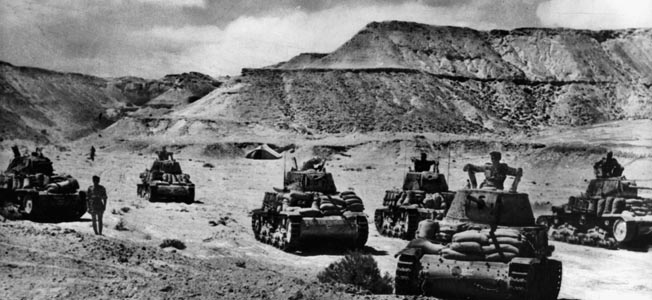
Turner decided to send out three more carriers with more wounded. Again one of them was hit before it reached the relative safety of the ridge. Major Pearson kept trying to send out his resupply convoy, but the Axis forces threw such heavy fire at it each time that Pearson decided it would have been suicide to keep going. Meanwhile the 1st Armoured Division commander, Maj. Gen. Briggs, monitored the battle, listening to Snipe’s pleas for help over the radio, asking for tanks to come to their support. He also was listening to intercepts of German radio traffic. He knew both the 15th and 21st Panzer Divisions were being marshaled to counterattack against 1st Armoured. His choice was to either save his tanks for the coming strike or deploy them to Snipe’s assistance, risking their loss before the main Axis attack came in.
“My reluctant decision was that I must leave the infantrymen to fight it out for themselves,” Briggs would later write.
One Last 6-Pounder in the Southwest Section
Left to their own devices, the men at Outpost Snipe prepared for another enemy assault, and at 1 pm another Italian attack began against the southwest section of the perimeter. This time eight tanks attacked, supported by infantry and a single Semovente assault gun. The attack also showed greater determination than the earlier Italian assault, this group continuing on even after taking fire.
The heavy shelling had reduced the British in this section to a single 6-pounder under the command of Sergeant Callistan. Most of his crew was now wounded, and he had sent the rest to fetch ammunition, leaving him to operate the cannon alone. Turner saw this and rushed over to help along with the platoon commander, Lieutenant Jack Toms. The battalion commander took over as loader, while Callistan aimed and fired the gun. Turner told the sergeant to hold his fire until the enemy was only 600 yards away. Callistan then opened fire with devastating effect, hitting five tanks and the self-propelled gun with six shots, leaving all of them burning.
Now they had a problem. The three remaining vehicles continued attacking, and there were only two rounds of ammunition left. Adding to the dilemma, Lt. Col. Turner was badly wounded in the head by a chunk of shrapnel but refused treatment and stayed at the gun. Two of Callistan’s gun crew crawled out on their stomachs to try to get more rounds for the cannon, but this exposed them to heavy fire and they barely made any progress.
While the wounded colonel continued directing Callistan’s fire, Lieutenant Toms dashed off toward his jeep. It was 100 yards away but contained four boxes of precious 6-pounder ammunition. Machine-gun fire chased him the entire distance, bullets snapping past and kicking up puffs of sand and dust. Somehow he reached the jeep unscathed and drove right over to the waiting gun. Along the way the jeep was hit and caught fire, but Toms kept going. The crew pulled the ammo boxes off and once again manned their gun, the now-weakening Turner set beneath a scrub bush to rest. Callistan took aim at one of the three remaining tanks and fired, hitting it. Two more shots resulted in two more wrecked tanks—three in a row. As Callistan and his crew fired, Lieutenant Toms shouted back to Turner to keep him apprised. With the third hit the colonel cried out, “Good work! A hat trick—a hat trick!” The last tank had been destroyed only 200 yards from the perimeter.
“Open fire on that destroyer!”
The immediate threat over, Callistan filled a can with some water and set it on the burning jeep. Soon they had three cups of tea. Turner tried to resume checking his lines, but the wound was causing him to hallucinate, so he was taken to the headquarters dugout. There he began to imagine he was defending a harbor against attacking ships—not a bad analogy considering his tiny island outpost was at that moment awash in a sea of Axis tanks. At one point he cried out, “Open fire on that destroyer!” and shortly afterward had to be physically restrained for a time. NCOs were commanding some parts of the perimeter since most of the officers were dead or wounded. The desert heat was oppressive, and flies gathered in great swarms, especially around the wounded. The only respite was that the Axis forces seemed equally tasked and made no further attempt to attack for the next few hours.
Overhead a force of 60 Axis fighters and dive bombers appeared, but these were intercepted by 12 British Hawker Hurricane and 16 American Curtiss P-40 Warhawk fighters and driven off with the loss of at least eight planes (the two Allied Squadrons claimed 15 aircraft between them) while the British lost three Hurricanes. The Axis sortie had been part of Rommel’s planned counterattack, but the stiff Allied air resistance had disrupted it.
Friendly Fire On Outpost Snipe
The British 2nd Armored Brigade appeared on Kidney Ridge at 4 pm. What must have been a sense of relief for 2nd Rifle Brigade turned to anger when the British tank force made the same mistake its brothers had earlier and opened fire on Snipe. The incoming fire included 105mm howitzers from the 11th Royal Horse Artillery, which was supporting 2nd Armoured. Turner later commented, “During an unpleasant day, this was the most unpleasant thing that happened.” The error was quickly corrected and just in time. Two groups of Axis tanks could be seen gathering for an assault some 1,200 yards to the west. The first group had a mix of some 40 German and Italian tanks, while the other had 30 German armored vehicles.
At 5 pm, the larger group advanced directly toward 2nd Armored Brigade. In what must have been a communications breakdown, this armored force came straight past Outpost Snipe and the waiting guns of 239 Battery as though it had no idea the British were there. Only four guns remained, and the gunners waited until their foe was only 200 yards away with its flanks exposed. They opened a vicious fire upon the panzers, a few S Company guns joining in. The air around Snipe once again swirled with dust and smoke as round after round sought out the vulnerable armor of their quarry. Sergeant D. Newman of S Company was on the left end of the British line; his gun could be heard firing over and over. The sergeant later said he had hit four tanks, including a Panzer II from which a crewman wearing a long white coat jumped.
Newman’s guns put out such effective fire that a panzer turned to attack it directly. Seeing this, Sergeant F. Hillyer traversed his gun and fired, scoring a hit. Lieutenant Baer, the 239 Battery commander, helped man a gun himself. Eventually it became jammed by sand and grit, forcing him to close the breech by banging on it with an empty shell casing. In this furious exchange of fire a dozen panzers were knocked out in only two minutes, half of them catching fire. A Panzer IV was hit simultaneously by two 6-pounders. Only a minute later, one of those British guns was hit in turn, killing or wounding all but one of the crew. Even so, the attack was stalled, and the Germans withdrew to some nearby low ground to hide.
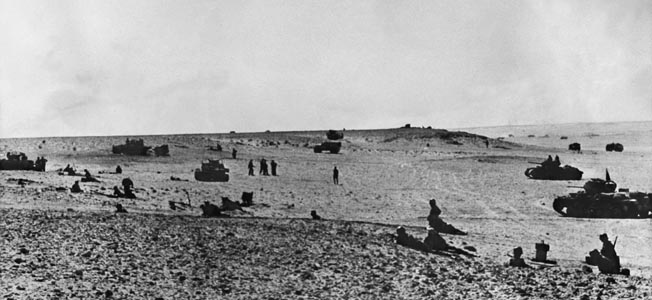
Pinned Down by Machine Gun Fire
The second Axis group now detached 15 of its own tanks to try to overrun Snipe. This group, having seen what the British gunners could do, moved carefully, using every low spot and small sand mound for cover. The Germans used their machine guns liberally to try to suppress their opponents. Against this force coming in from the west, only three 6-pounders could fire. Each had only 10 rounds left. Initially, the gunners held their fire. Riflemen hidden nearby in their foxholes wondered why the guns remained silent. A few of the infantrymen even considered crawling to a nearby gun and using it themselves, but the heavy machine-gun fire kept them pinned in their hole. Turner, who had recovered a bit, even ordered the maps and codes burned, fearing this might be the end.
Two of the British riflemen, Privates Crimp and Suckling, huddled with their fellow soldiers as a panzer fired its cannon and machine gun at them. Then Crimp saw a gunner crawl from a trench and run over to a gun whose crew was pinned down. The gunner withdrew the round from the weapon’s breech, hurried back to his own 6-pounder with machine-gun fire rattling around him, and then loaded and fired his own gun, knocking out the panzer. It was very rough going; the panzers were close enough for their machine-gun ammunition to pierce the gun shields of the 6-pounders.
Another gun commanded by a Sergeant Miles was likewise pinned and Miles himself wounded. Color Sergeant J.E. Swann crawled 30 yards to Miles’s gun and took over, operating it singlehandedly until the rest of the crew got forward to help. He knocked out the closest panzer, and the rest of the guns opened fire at 200 yards. Within minutes six more panzers were destroyed. A sergeant named Hine saw two Panzer III tanks lined up one behind the other in his sights. He fired, and the shell blasted completely through the nearest tank and hit the other, 10 yards behind the first. The closer tank was only 100 yards away from Hine’s gun. This was enough for the Germans, and this force likewise retreated 800 yards to a depression where it kept firing on the outpost until dusk, when it was seen heading west. The 6-pounders that had beaten off the attack were down to three rounds each.
While the sporadic fire continued, Captain Marten, the senior unwounded officer, received a radio transmission informing him that the battalion would be relieved. Since the codebooks had been burned, they again improvised a code. The brigade commander, Brigadier Bosville, told Marten 2nd Rifle Brigade would be relieved at “dinner time.” Marten asked if the meal would be “an early dinner or a late one?” to which Bosville replied “The fashionable time.” This meant 9 pm. Unfortunately, the 5th Sussex Regiment, the relief force, went to the wrong location and dug in there, leaving the men at Snipe wondering if they would ever get relief. Finally, at 11 pm Bosville granted Marten permission to withdraw.
Eliminating 10 Percent of Rommel’s Armored Strength
The British did their best to collect their casualties, but there was not enough working transport to carry the dead, so they had to be left behind. The wounded were crowded aboard six carriers and three jeeps and sent east. Only a single 6-pounder was taken along, its portee riddled with bullet holes. The rest of the guns had their sights and breech blocks removed and were abandoned. The walking wounded and uninjured had to walk back under fire in a small column. The weary Sergeant Callistan recalled the horrid journey: “We had men with tommy guns leading and we carried the wounded in the center. Before we moved off I did something you may think rather stupid—I went back and kissed my gun. I carried one of our wounded on my back. Freddie—that was his name. He had volunteered to come out here. Been out only a few weeks. He had a wife and four children. He had been wounded trying to help someone else. They got him on the way back—shot him through the head.”
The amazing ordeal of Outpost Snipe was retold throughout the British Army. A month later, the battle over, an official inquiry was convened that revisited the battle site to recount the action. It was determined that the men of Outpost Snipe had been responsible for knocking out 52-57 Axis tanks, 15 to 20 of which had been recovered by the Germans. The hulks of 37 armored vehicles still littered the field. Nineteen of these were claimed by 239 Battery. This constituted roughly 10 percent of Rommel’s total armored strength at El Alamein, a considerable score for one British battalion.
For their efforts and bravery that day, Lt. Col. Turner was awarded the Victoria Cross, while Sergeant Callistan was recommended for one but received the Distinguished Conduct Medal instead. Callistan would later be commissioned but sadly was killed during the Italian Campaign. Color Sergeant Swann also was awarded the Distinguished Conduct Medal, and various additional decorations went to other soldiers.
Rommel himself wrote, “A murderous British fire struck into our ranks and our attack was soon brought to a halt by an immensely powerful antitank defense, mainly from dug-in anti-tank guns.” It was a fitting tribute to the dogged perseverance of the soldiers of the 2nd Battalion, Rifle Brigade.
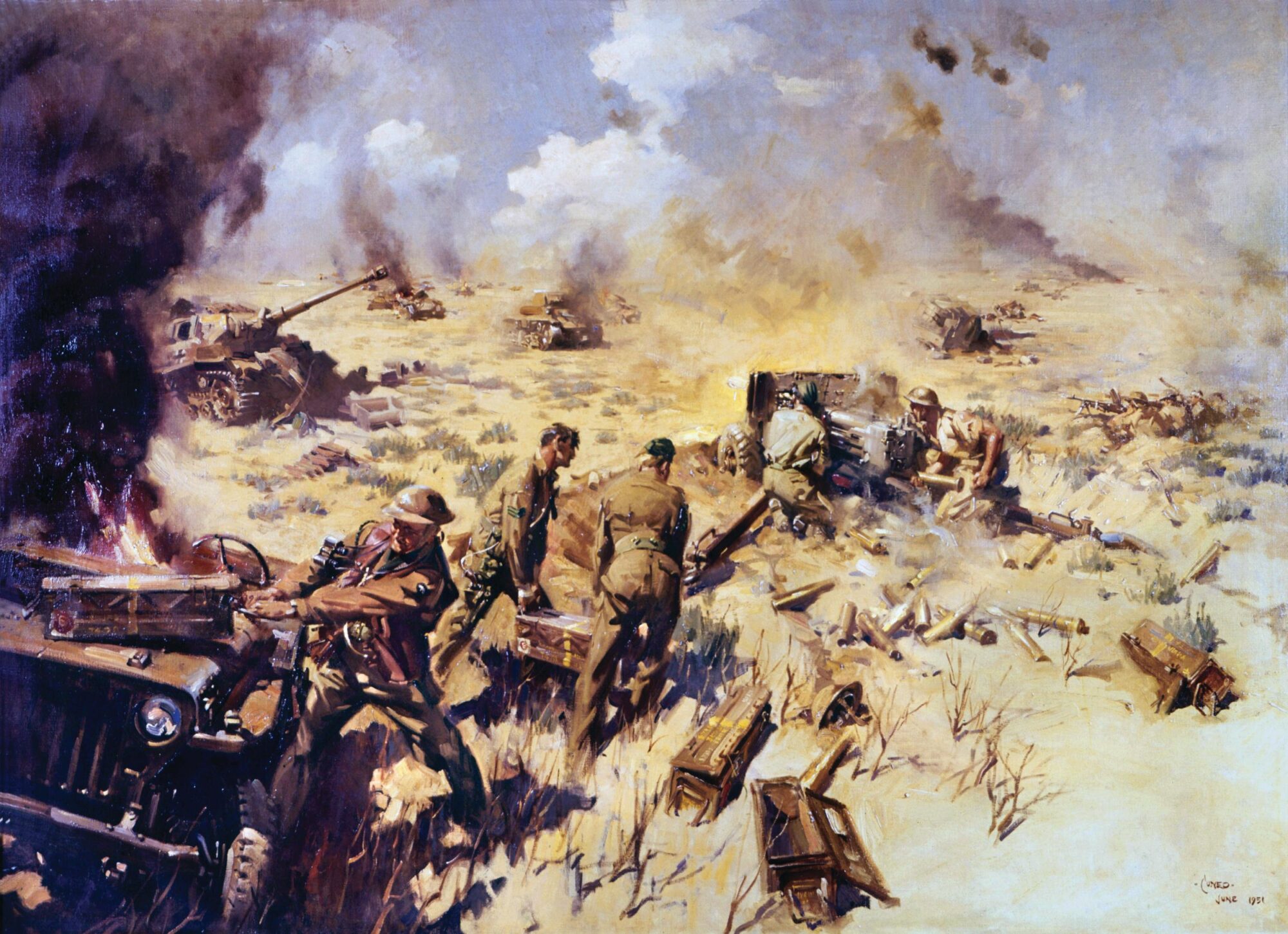
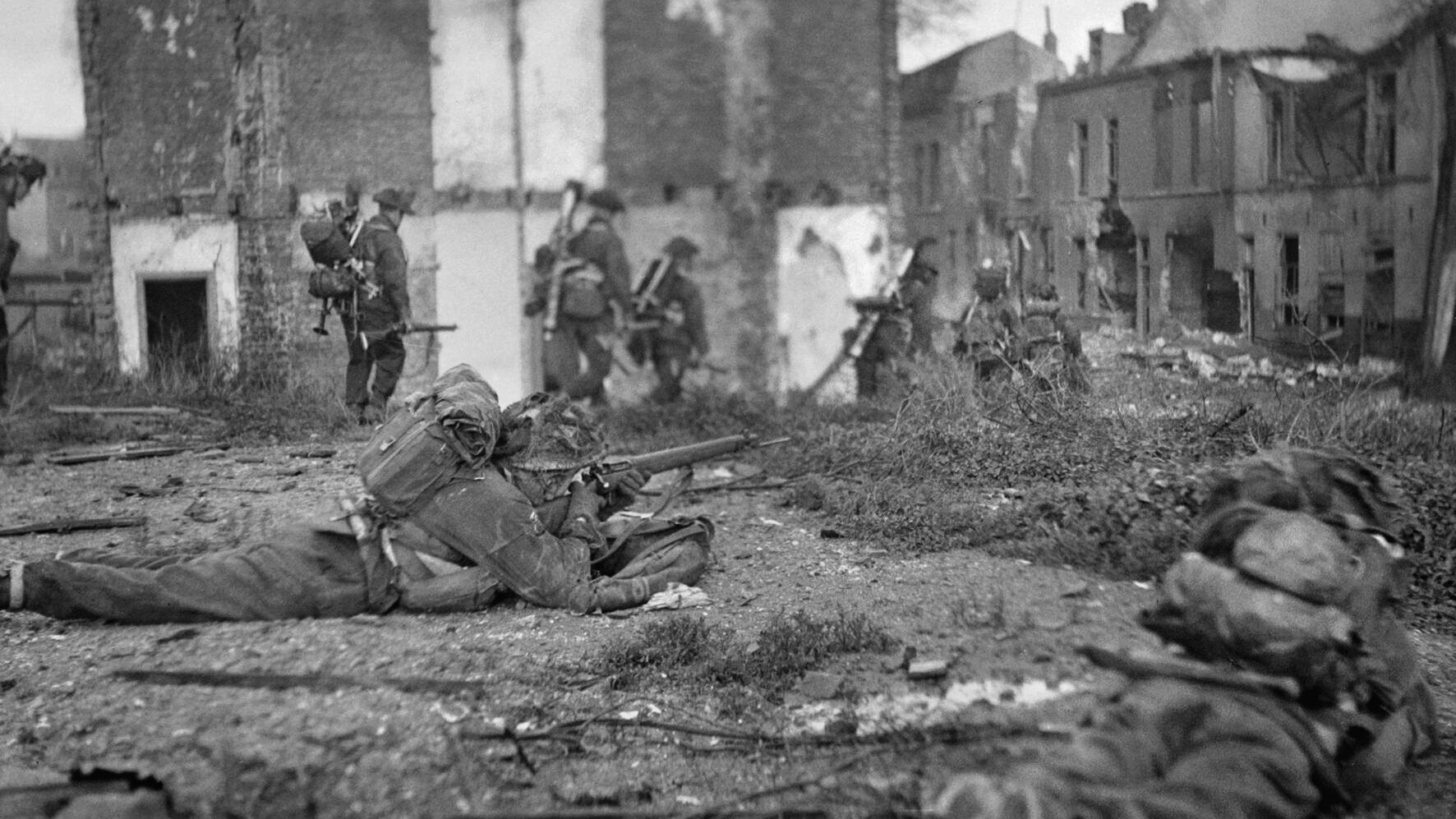
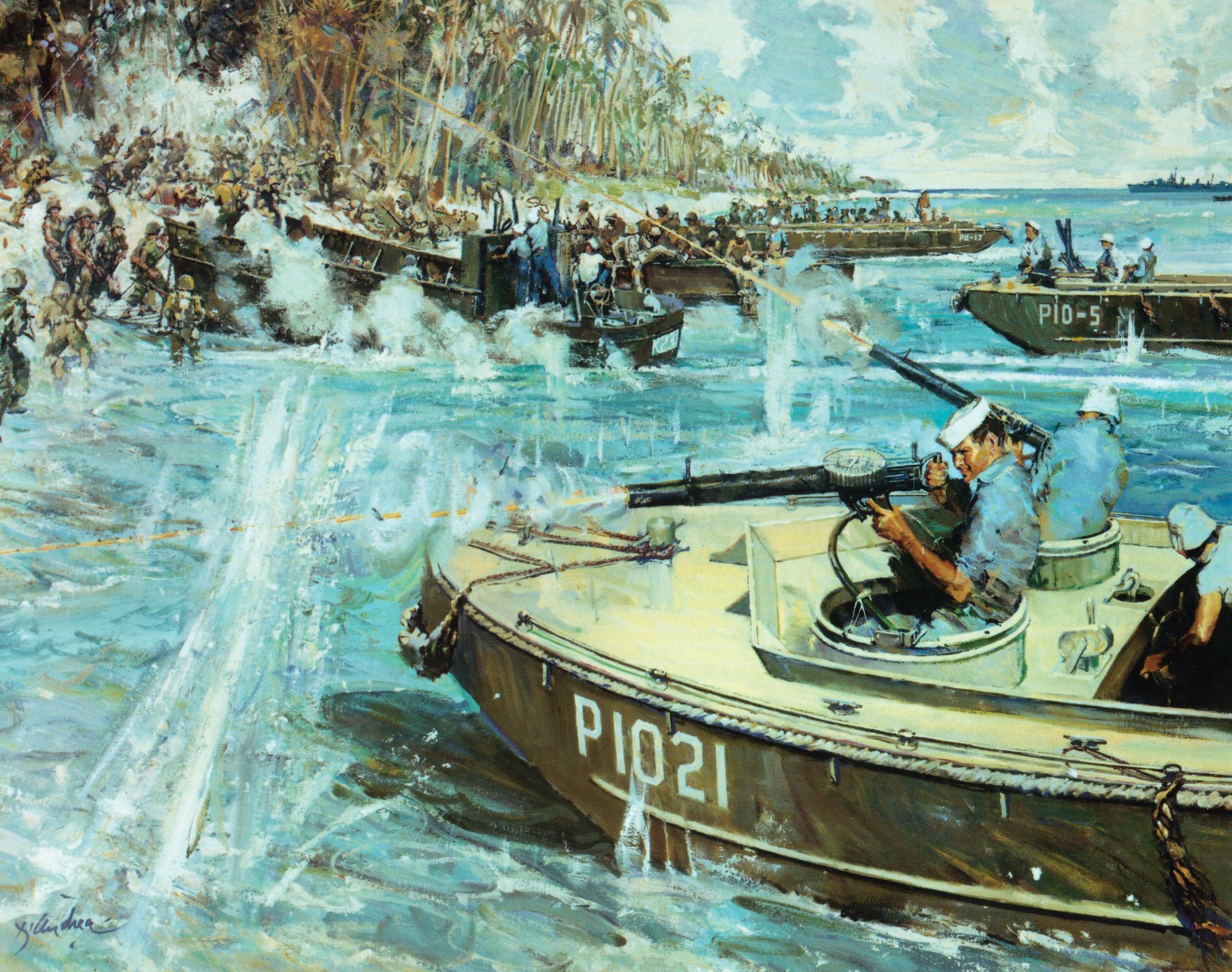
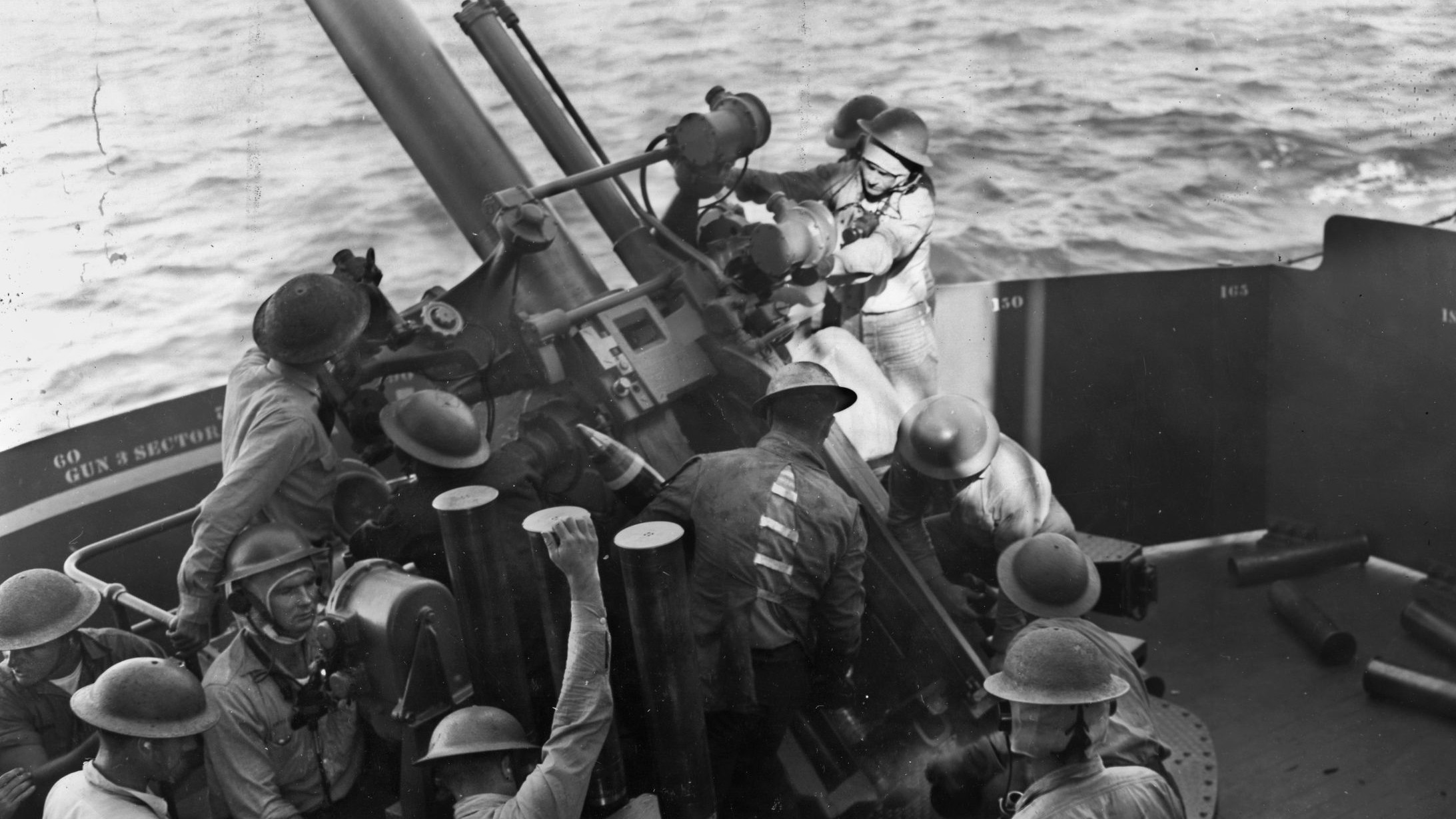
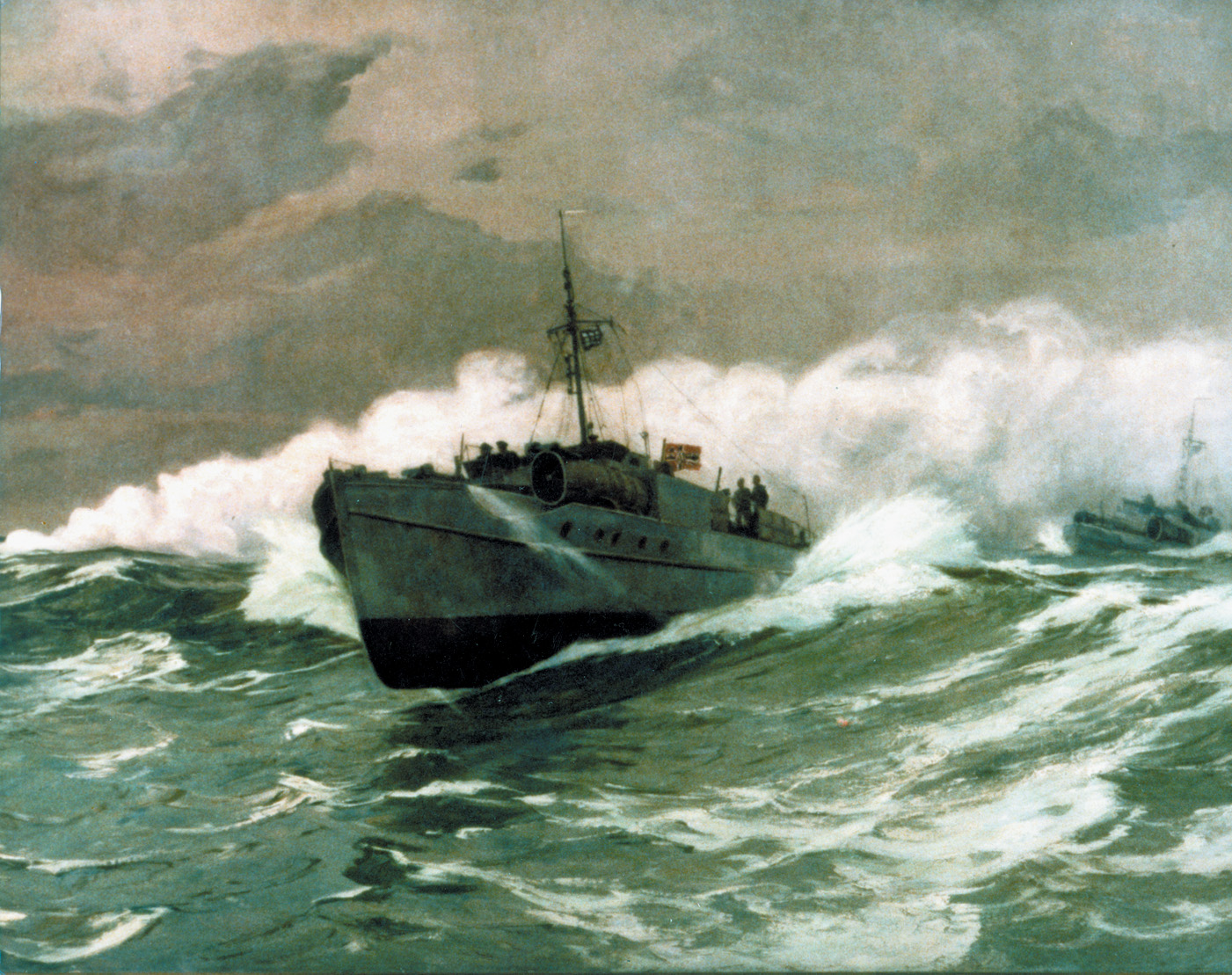
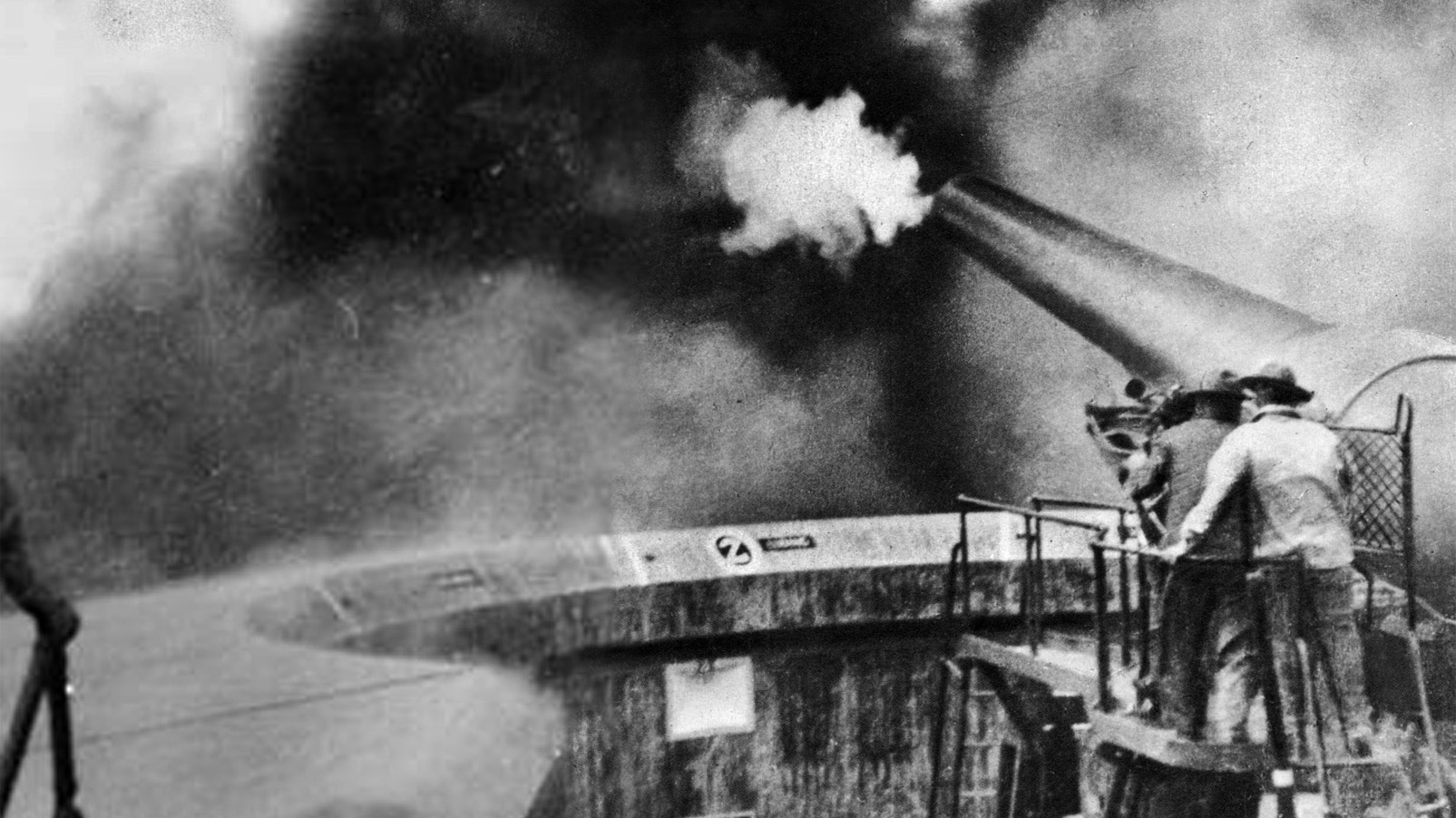
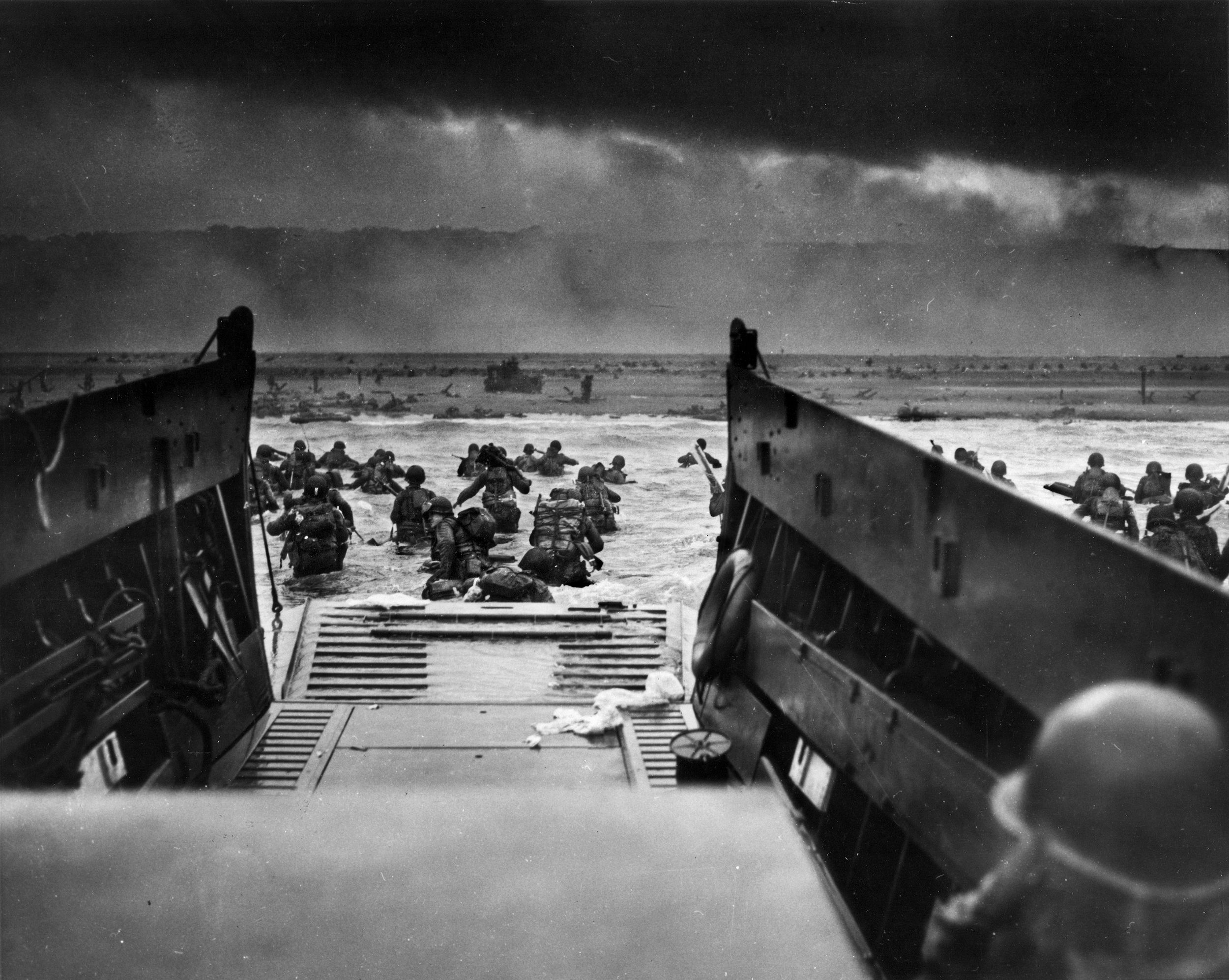
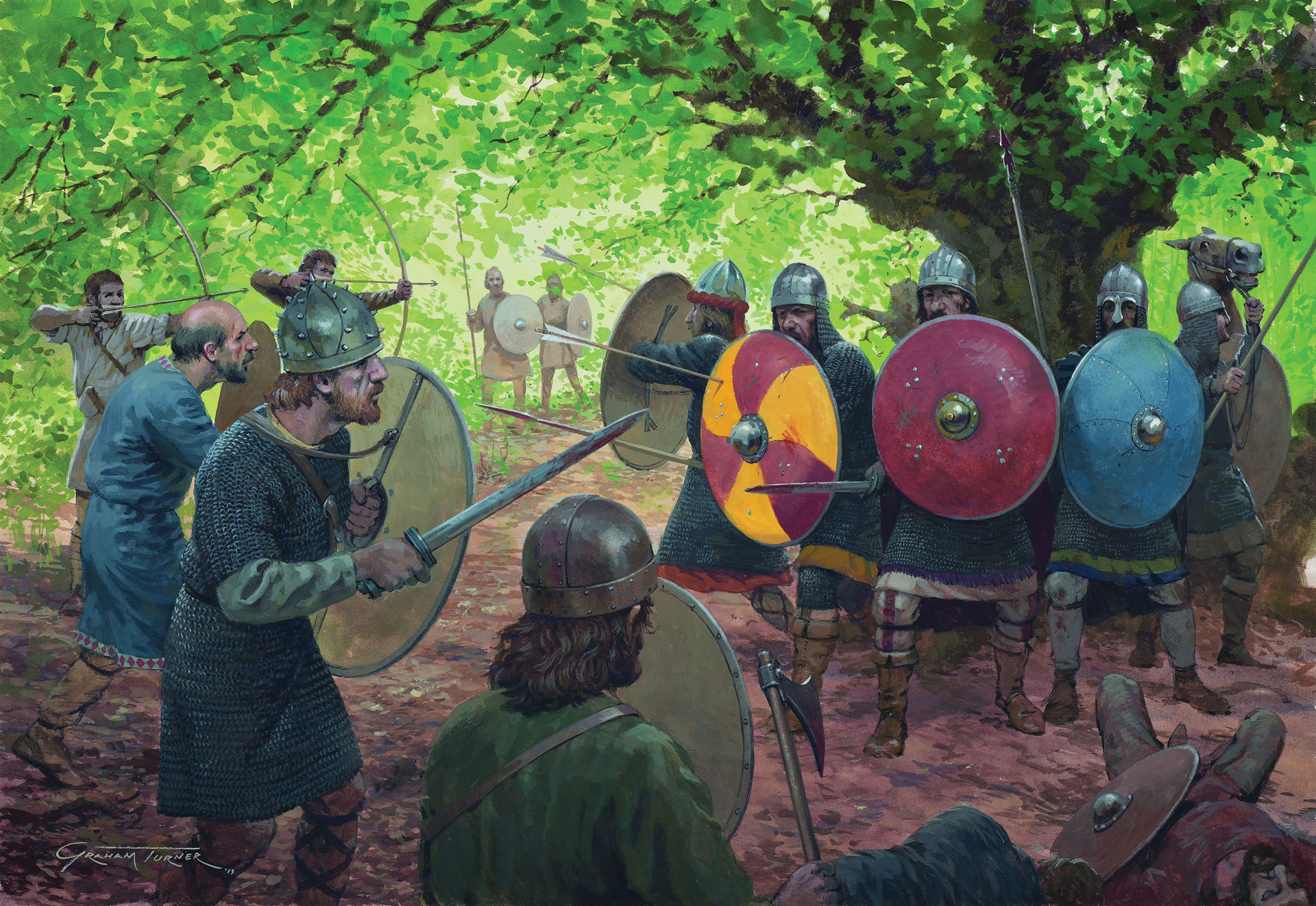
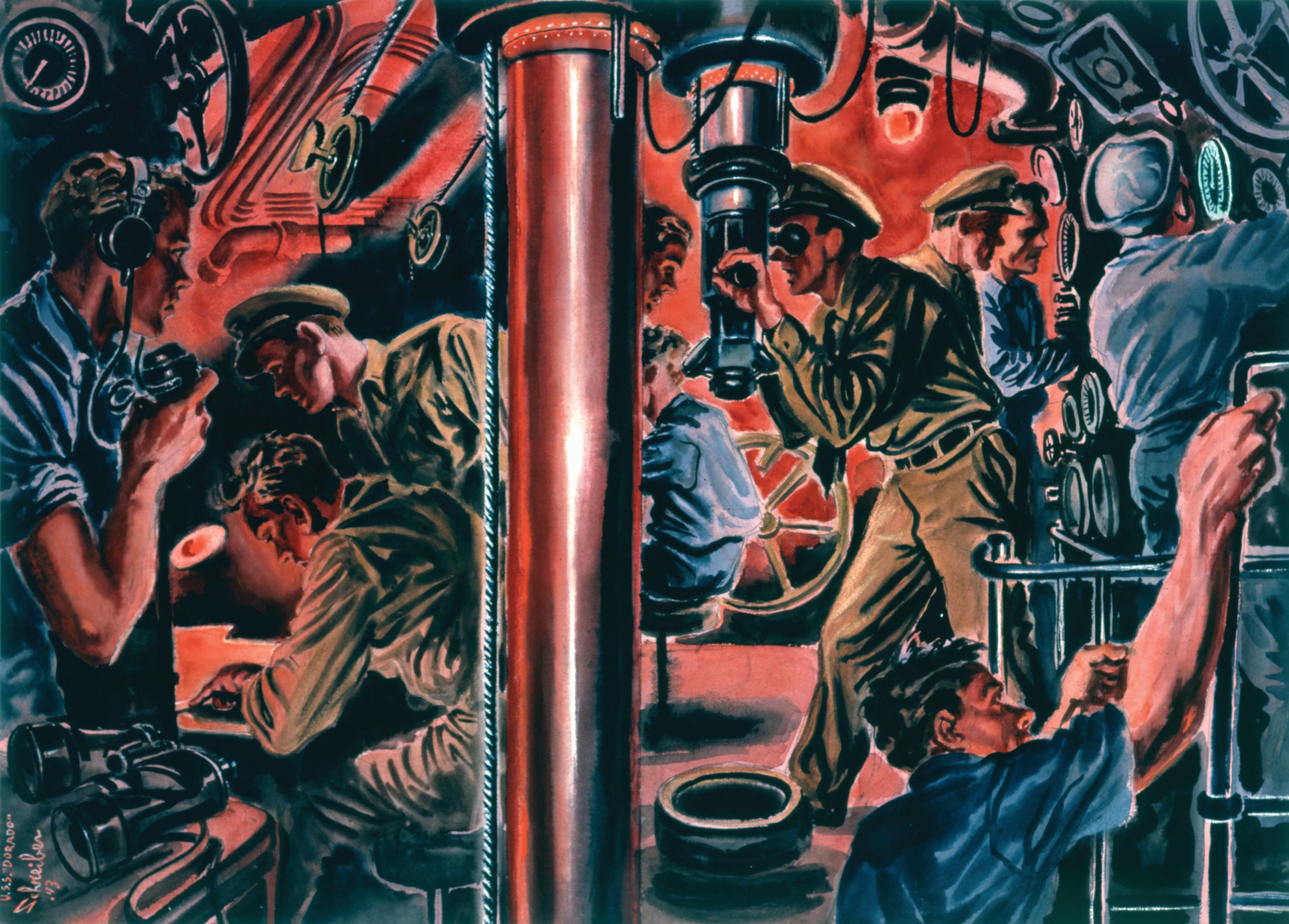
Join The Conversation
Comments
View All Comments